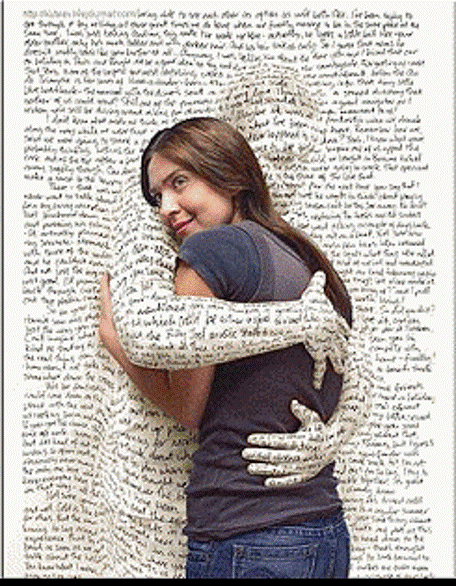BoSacks Speaks Out: The Print Renaissance: A Manifesto for Intentional Design
By Bob Sacks
Sun, Jul 13, 2025

In my last keynote in June at the CRMA Conference in Denver, I suggested that print isn't obsolete. But mediocrity is.
The future belongs to those who print with purpose, sell with intention, and deliver with style.
We're done pretending that more volume means more value. That game's over, buried under its own mediocrity, suffocated by the very abundance it promised. The future of print doesn't live in mass production; it lives in precision, in touch, and in unwavering intention.
The Death of Mass and the Birth of Meaning
For decades, we've worshipped at the altar of volume. Print more, distribute wider, reach everyone. But "everyone" became "no one," and our messages disappeared into the white noise of oversaturation. The survivors of this print apocalypse aren't the loudest voices; they're the most deliberate ones.
Print's evolution is about elevating impact, not output. This isn't about printing less because we have to; it's about printing better because we choose to. Every sheet becomes a statement. Every impression becomes an investment.
The Tangible Advantage
Paper matters again. Not just as a vehicle for words, but as a participant in the conversation. Finish matters. Tactile design isn't just aesthetic; it's strategic warfare against the digital deluge. We're talking about texture that lingers in the hand, weight that demands attention, embellishments that whisper, "This isn't just ink, this is a quality investment."
Consider the last time you held something truly exceptional in your hands. Think of Apple's product packaging, that satisfying resistance when lifting the lid, the way the device nestles perfectly in custom-molded paper, the texture that feels engineered for the moment. Or Mohawk Paper's sample books, where each page demonstrates a different finish, transforming a mundane catalog into a tactile journey. That moment of discovery? That's what digital can't replicate.
Digital's Limitations, Print's Opportunities
Digital owns scale. It owns speed. It owns the immediate and the infinite. But it can't hold a moment in your hand. It can't shimmer under office lighting, emboss a memory into fingertips, unfold like a secret, or surprise with texture. That's where print wins, not on price, but on presence.
While digital messages scroll past in milliseconds, print commands a different kind of attention. It requires physical interaction. It occupies space. It interrupts the digital stream with something fundamentally different: reality. This contrast becomes more pronounced as screen fatigue grows. Print provides a mindful, distraction-free environment where readers can engage deeply with curated, in-depth storytelling, offering a welcome break from digital overload.
The Marketer's Awakening
Smart marketers are waking up to this reality. Patagonia's catalogs aren't just product listings, they're manifestos printed on recycled paper that feels like the outdoor gear they sell. Netflix's Emmy campaign mailers arrive in custom boxes that unfold into immersive experiences, complete with scented paper that evokes the shows they're promoting. Luxury brands like Hermès create shopping bags so beautiful they become keepsakes, extending the brand experience long after purchase. (I think I sound like Professor Husni there, who has promoted the “experience” of magazines for decades.)
This awakening extends beyond individual campaigns to entire industries. Print magazines are experiencing a surprising resurgence in 2025, driven by demand for tangible, premium, and niche content. Publications are evolving into collectible art pieces and lifestyle accessories valued for their aesthetic and nostalgic appeal, often displayed proudly in homes. This transformation from disposable media to cherished objects exemplifies the broader shift toward intentional print.
These brands embrace shorter runs with smarter targeting, investing in higher quality stock, and treating print as a premium channel rather than a commodity. This is the renaissance, not a nostalgic return to old habits, but a strategic rebirth of intelligent print application.
When done right, print becomes the physical proof of care. It signals that the sender invested not just money, but thought. It says, "This message was important enough to make real."
The New Rules of Engagement
The new print paradigm operates on different principles:
Quality over quantity. Every printed piece must justify its existence. If it doesn't add value, it doesn't get made.
Precision over proliferation. Instead of casting wide nets, we're crafting targeted spears. Each piece reaches fewer people but creates deeper impact. Some print magazines are thriving by targeting niche audiences and special interests, building loyal communities with content that resonates deeply and fostering a shared identity among readers. This is not the publishing industry of yesteryear.
Experience over information. We're not just transmitting data; we're creating moments. The unboxing experience, the feel of the paper, the way light plays across the surface, these elements become part of the message.
Intention over habit. Every choice, from paper weight to printing technique to finishing touches, serves a strategic purpose. Nothing is arbitrary. The curated, high-quality nature of focused publications allows them to charge premium prices and maintain relevance despite the dominance of mass digital content.
The Sensory Revolution
Print engages senses that digital cannot touch. The subtle grain of Crane's Cotton paper, the satisfying weight of a Neenah Classic Crest brochure (80#), the tactile pleasure of raised lettering from thermographic printing, these elements create neural pathways that pure information cannot forge.
Take Google's annual report, printed on paper embedded with actual seeds that recipients can plant. Or BMW's print ads featuring working LED lights powered by the magazine's battery, making the car's headlights actually illuminate on the page. These aren't gimmicks, they're strategic sensory experiences that create unforgettable brand moments.
Neuroscience backs this up. Physical interaction with materials creates stronger memory formation. The act of touching, feeling, and manipulating printed materials engages multiple brain regions simultaneously, creating richer, more durable impressions than screen-based interactions.
Beyond the Commodity Trap
The old print model treated every job as a commodity, find the cheapest option, maximize volume, minimize cost.
The new model treats every job as an opportunity to create value. Consider how Airbnb's host welcome packages arrive in custom boxes with locally-sourced paper and region-specific designs. Or how luxury hotels like The Standard create room service menus using paper that matches their interior design aesthetic. The question isn't "How can we print this cheaply?" but "How can we print this meaningfully?"
This shift requires new partnerships, new capabilities, and new thinking. Printers become collaborators in design. Designers become strategists in communication. Marketers become curators of experience.
The Sustainable Imperative
Intentional print is inherently more sustainable. When every piece must justify its existence, waste disappears. When quality matters more than quantity, materials are chosen for longevity rather than disposability. When precision replaces proliferation, environmental impact shrinks while effectiveness grows.
Forward-thinking publishers are leading this charge. Magazines are adopting eco-friendly materials like recycled paper, soy-based inks, and biodegradable alternatives, while implementing carbon-neutral printing practices. This shift aligns with growing consumer environmental awareness and the trend toward "slow journalism," where print issues are designed to be kept and cherished over time, reducing waste and promoting mindful consumption versus fleeting digital content.
This isn't about printing less out of guilt, it's about printing better out of wisdom.
The Future is Hybrid, Not Binary
The future doesn't pit print against digital in a zero-sum game. The future integrates them strategically. IKEA's catalog includes QR codes that launch AR experiences when scanned, letting customers visualize furniture in their homes. Spotify's year-end "Wrapped" campaigns combine digital personalization with custom-printed vinyl records for top users. Warby Parker's home try-on kits arrive in beautifully designed boxes that feel like gift packages, complete with branded cleaning cloths and return materials.
Publishers are embracing these hybrid models that utilize digital platforms to complement print editions. Digital tools promote print magazines, foster online communities, and provide interactive features like augmented reality (AR), clickable content, and multimedia extensions that enrich the reading experience. Social media plays a vital role in marketing print through influencer collaborations and teaser content, helping reach new and loyal audiences. Booktok has been wildly successful. I’m still waiting for Magtok.
Print handles what it does best, creating tangible moments, commanding attention, engaging senses, and proving care. Digital handles what it does best, providing scale, enabling interaction, delivering immediacy, and facilitating connection.
The magic happens when these channels work together, each amplifying the other's strengths while compensating for their limitations.
The Call to Action
The print renaissance isn't coming, it's here. It's happening in the studios of designers who understand that paper is a medium, not just a substrate. It's happening in the strategies of marketers who recognize that attention is earned through experience. It's happening in the shops of printers who see themselves as craftspeople, not just manufacturers.
The question isn't whether print has a future. It does. Print with purpose. Sell with intention. Deliver with style.
